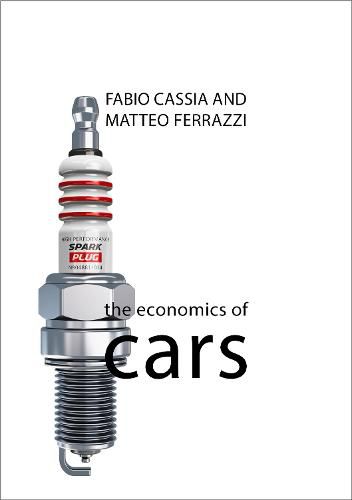Readings Newsletter
Become a Readings Member to make your shopping experience even easier.
Sign in or sign up for free!
You’re not far away from qualifying for FREE standard shipping within Australia
You’ve qualified for FREE standard shipping within Australia
The cart is loading…






The automotive sector represents more than a simple industry. It embodies the economic and technological power of nations, the lifestyle and consumption patterns of societies, the dynamics of urban and territorial development, and acts as a national barometer of economic success and failure.
This book explains how the car industry works and analyses the challenges both for the sector and for the economies that rely on the industry for jobs, growth and innovation. It explores an industry that has been under severe pressure in industrialized countries for many years - factories have closed, jobs have gone and brands and manufacturers have disappeared - yet world production has never been higher, reaching new peaks annually.
The authors investigate how western and Japanese manufacturers still dominate the market, despite the challenge posed by Korean, Chinese and Indian competitors. They examine how changing environmental policies and consumer preferences are moving the industry towards electric vehicles; how usage patterns are evolving, favouring car-sharing; and how advances in electronics and digitalization are set to further reshape the sector with autonomous and self-driving vehicles.
The book offers readers a short, non-technical guide to the workings of a fast-moving industry that remains of huge importance to both national and global economies.
$9.00 standard shipping within Australia
FREE standard shipping within Australia for orders over $100.00
Express & International shipping calculated at checkout
The automotive sector represents more than a simple industry. It embodies the economic and technological power of nations, the lifestyle and consumption patterns of societies, the dynamics of urban and territorial development, and acts as a national barometer of economic success and failure.
This book explains how the car industry works and analyses the challenges both for the sector and for the economies that rely on the industry for jobs, growth and innovation. It explores an industry that has been under severe pressure in industrialized countries for many years - factories have closed, jobs have gone and brands and manufacturers have disappeared - yet world production has never been higher, reaching new peaks annually.
The authors investigate how western and Japanese manufacturers still dominate the market, despite the challenge posed by Korean, Chinese and Indian competitors. They examine how changing environmental policies and consumer preferences are moving the industry towards electric vehicles; how usage patterns are evolving, favouring car-sharing; and how advances in electronics and digitalization are set to further reshape the sector with autonomous and self-driving vehicles.
The book offers readers a short, non-technical guide to the workings of a fast-moving industry that remains of huge importance to both national and global economies.